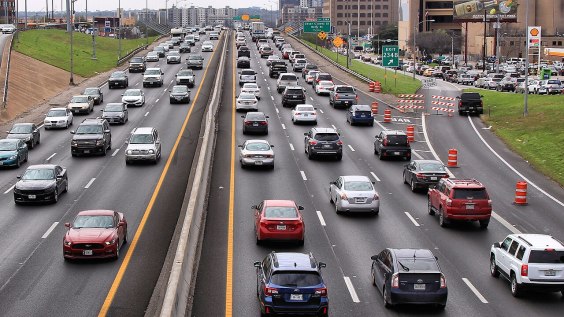
The SFMTA Board of Directors today approved a package of upgrades on McAllister Street to improve pedestrian safety and speed up buses on the 5-Fulton line as part of Muni Forward. Among the changes, two stop signs will be replaced with transit-priority traffic signals, and two others will be replaced with traffic circles.
The project is expected to shave 20 percent off travel times along the route, which goes from the Outer Richmond to downtown, according to the SFMTA. That added speed will come on top of the boost given to the route two years ago, with the launch of 5-Fulton Rapid service and street upgrades like bus bulb-outs.
The changes approved today include traffic signals that give priority to buses where McAllister intersects with Scott Street and Broderick Street. The original proposal called for signals at five intersections but the plan changed after protests from neighbors. But at two of those intersections -- Lyon Street and Steiner Street -- McAllister will get traffic circles to calm motor vehicle speeds, the first such treatment on a bus route in SF.
An SFMTA report [PDF] noted that "a number of residents" at a July hearing "voice[d] their feedback that traffic circles do not, in their view, provide adequate pedestrian safety."
"SFMTA staff believes that this is, in fact, not true," the report said, citing examples in other cities. Sacramento, for instance, saw a 70 percent drop in crashes "at locations where they implemented a traffic circle."
![The plan for a traffic circle at McAllister and Steiner. Image: SFMTA [PDF]](https://lede-admin.sf.streetsblog.org/wp-content/uploads/sites/47/2015/09/circle.jpg?w=710)
The stops at Laguna and Gough will be moved to the far side of the intersection, so that buses can clear traffic signals before loading passengers. A bus stop will also be removed at McAllister and Lyon, and a bus bulb-out will be added where McAllister intersects with Larkin Street and Market Street.
SFMTA Director Ed Reiskin said in a statement that the 5R upgrades launched in October 2013 resulted in "dramatic increases in both service and ridership for this route."
Ridership grew by an impressive 10 percent along the entire corridor. When we zeroed in on certain streets, service between 6th Avenue and downtown jumped by 33 percent during the morning peak, 13 percent during the afternoon peak and 60 percent during midday operations. Muni collisions also dropped by 36 percent on Fulton between Central and Stanyan.
Not only will better service draw more riders, it will also save time for many people who already ride this route. "Looking at just one driver on a single route, eliminating one, two, or even six minutes for each lap adds up dramatically,” said Andy Bosselman of the SF Transit Riders Union in a statement. "That’s in a single day. These travel time improvements are even more dramatic when multiplied across all of the drivers and all of the routes with changes."
![Image: SFMTA [PDF]](https://lede-admin.sf.streetsblog.org/wp-content/uploads/sites/47/2015/09/5-upgrades.jpg?w=710)




